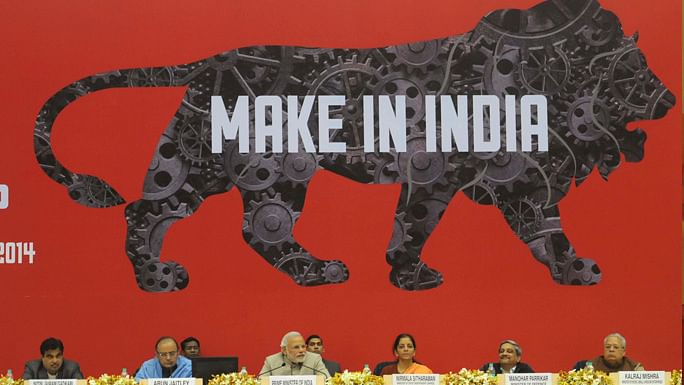Think of the sheer number of steps to start a business in India: GST registration, environmental clearances, FSSAI approvals, local municipal permissions—each necessitating its own maze of forms, approvals, and timelines. What should be a smooth, single-window digital process is often a months-long process. They choke momentum, drain capital, and demoralise founders before they start. And these barriers are structural, not accidental.
Access to capital is another huge obstacle. Risk-averse banks use outdated and opaque credit models, such as CIBIL scores, that punish young entrepreneurs who lack borrowing histories. For founders without collateral or elite networks, funding from conventional institutions is well out of reach. Venture capital is just as discriminatory, favouring entrepreneurs from urban areas who are English-speaking and embedded within the old boys’ network of academic and professional affiliations. This is why numerous promising concepts die on the vine—they aren’t given an equal opportunity.
Launched with great fanfare in 2014, Make in India sought to transform the nation into a global manufacturing hub. It promised 100 million industrial jobs by 2022 and a radical increase in manufacturing’s share of GDP. Early enthusiasm was great. Foreign direct investment took off. But under the hype, splintered governance, policy inconsistency, and inadequate infrastructure remained. Ambition was not accompanied by reform. Make in India turned into a textbook example of grand rhetoric and disappointing delivery.
The numbers behind India’s so-called startup boom paint a sobering picture. More than 28,000 startups in just the past two years—15,921 in 2023 and 12,717 in 2024. This marked a twelvefold rise from the last three-year period. New startup creation has also ground to a halt, with just 5,264 being established in 2024, down from an average of 9,600 a year between 2019 and 2022. As of early 2025, only 125 new startups have been registered.
Industries once touted as revolutionary—agritech, fintech, edtech, healthtech—are now strewn with failed startups. They’re victims of high burn rates, regulatory lags, low customer retention, and poor institutional support.
Recently, Union Minister of Commerce & Industry Piyush Goyal, panned Indian startups for being fixated on “low-end innovation” such as food delivery. But such potshots are hollow when the same system does not fund or facilitate more advanced technology forays. India’s R&D spending stands at around compared to the global average of approximately 2.6 per cent. The United States and China invest significantly more—about 3.5 per cent and 2.4 per cent of their GDP, respectively.
With such meager investment in R&D and little effort to promote it, how can we expect breakthroughs in fields like AI, robotics, or energy? Even our education system continues to prioritise rote learning over experimentation. Schools train students to compete in two- or three-hour exams. They fail to teach how to build enterprises or solve real-world problems.
Worse than the demise of a company is the death of entrepreneurial dreams. In India, failure isn’t viewed as an opportunity for learning—it’s a stigma. The impact of business failure is intensely personal. Individuals isolate themselves from society while dealing with psychological trauma.
Perhaps few tales capture the suffocating nature of India’s business environment as poignantly as the demise of VG Siddhartha, founder of Café Coffee Day. An experienced entrepreneur, Siddhartha died from the pressure of growing debt and purported harassment by tax authorities in 2019.
Pratyush Rai, who started Merlin AI, aptly : “Failure in India hurts more than in the US. Failure in the US is a pit stop. Failure in India is a dead end.”
One such healthtech startup based in Mumbai created a globally comparable AI-driven cold-chain logistics system to safely transport blood to hospitals. But its by a small regulatory hurdle: a lift installation license from the city administration. It took 18 months of waiting—by which time their funds evaporated, their partners exited, and the firm folded.
The entrepreneurs had addressed a critical healthcare issue. But their vision was murdered by institutional lethargy.
India is not short of ingenuity, ambition, or talent. But if we are serious about being an economic power, there has to be a bottom-up redesign of how we treat enterprise.
To make this transition real, it has to be made into law: All regulatory agencies have to act on applications within a defined time frame of 15 days. If they fail to do so, the application should be deemed automatically approved. This will cut down unnecessary delays and create a culture where entrepreneurship can flourish without the perpetual fear of stagnation.
We must also incentivise compliance—offering businesses or individuals rewards and support to ease the burden of regulation. For example, tax breaks or simplified procedures for those who meet compliance standards.
Simplify compliance. Repair regulatory logjams. Provide transparent and equitable access to credit. Safeguard founders from harassment. Above all, change the culture—to one that celebrates effort.
(Edited by Theres Sudeep)








